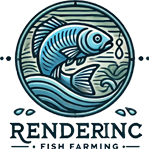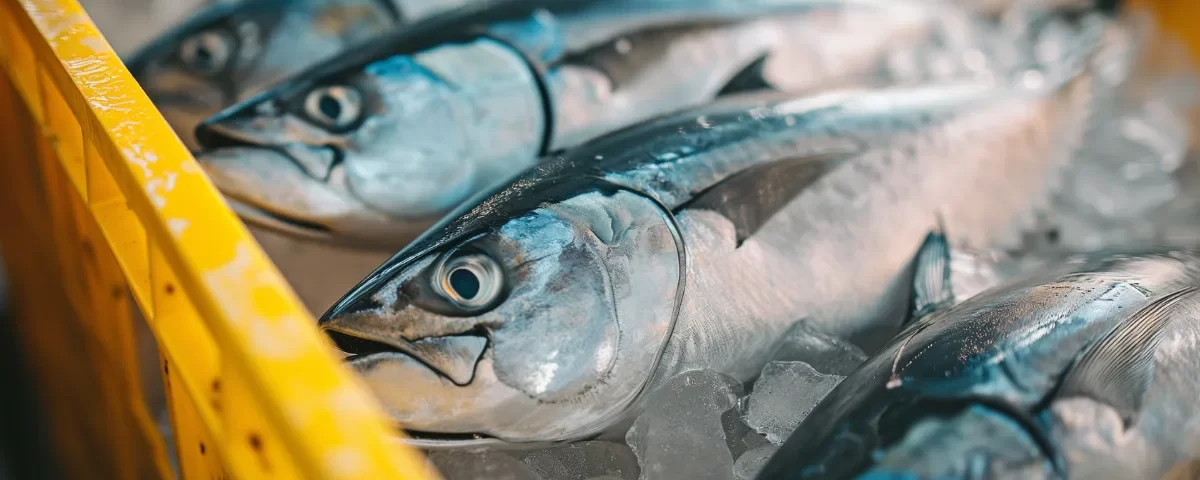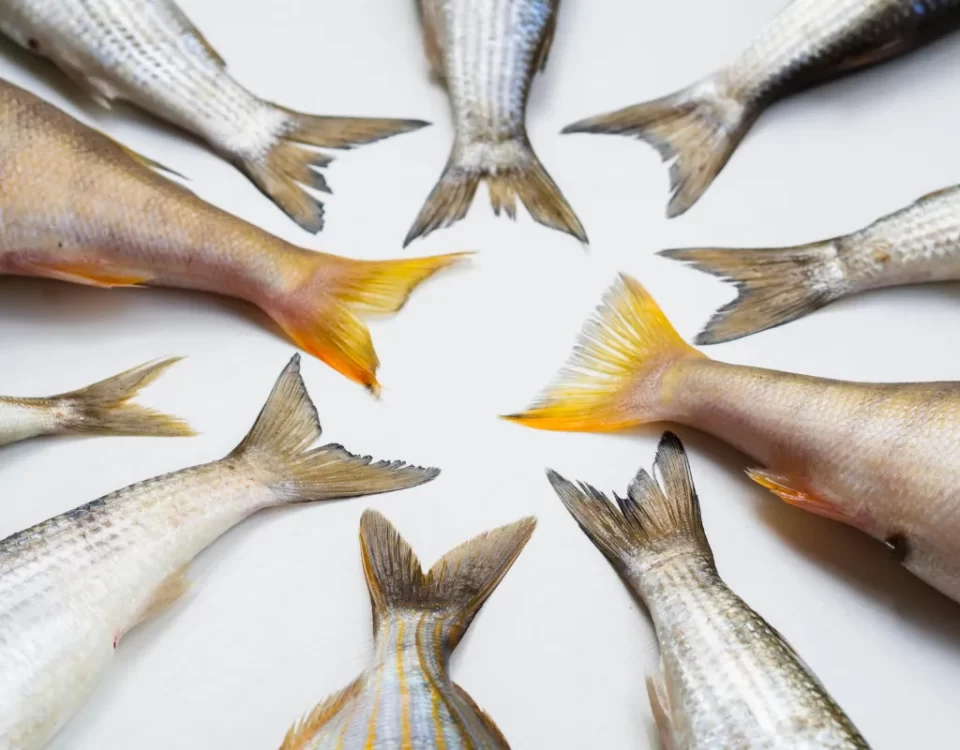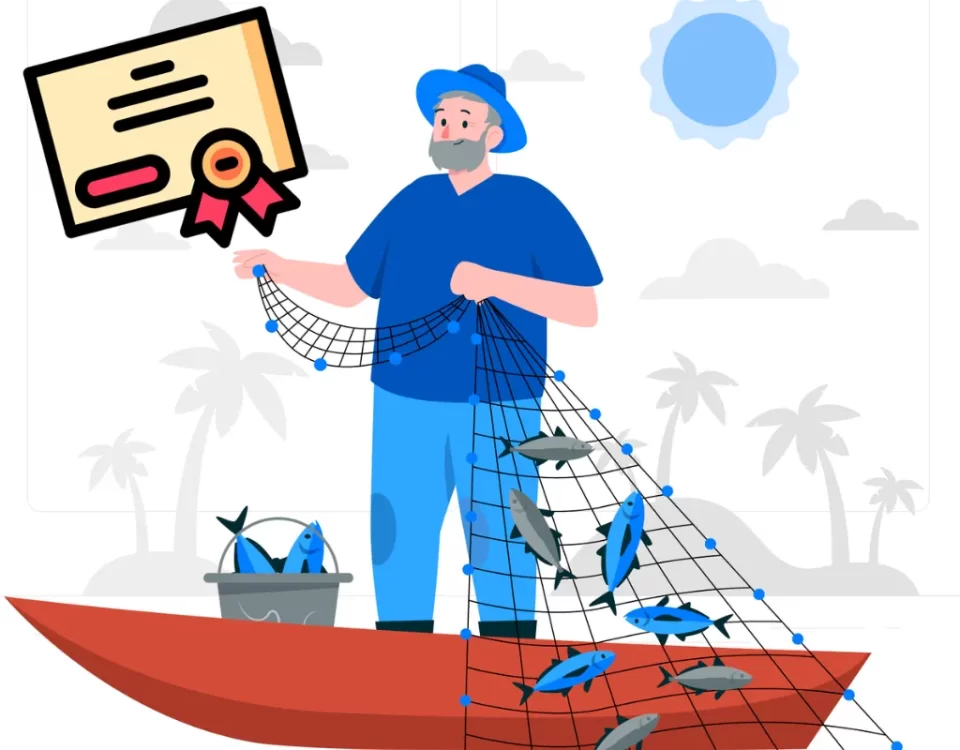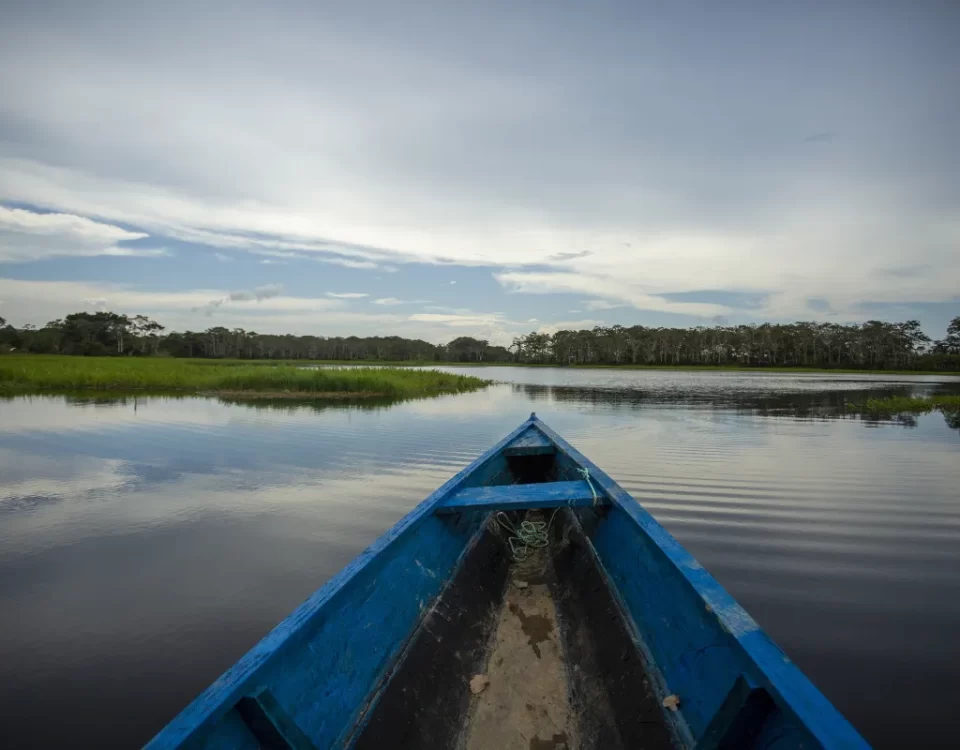Green Aquaculture: Growing Fish with Minimal Resources

Sustainable Fish Farming: Reducing Environmental Impact
setembro 5, 2024
Managing Risks in Fish Farming: What Every Farmer Should Know
setembro 6, 2024In the ever-evolving landscape of the food industry, aquaculture stands out as a crucial player in sustaining global food security. As the demand for seafood continues to rise, traditional fishing methods alone are unable to meet the needs of a growing population. Aquaculture, the practice of cultivating aquatic organisms in controlled environments, has thus emerged as a viable solution to supplement wild-caught seafood. By providing a reliable source of fish, aquaculture plays a significant role in ensuring a steady supply of protein-rich food to meet the dietary requirements of people worldwide.
However, the rapid expansion of aquaculture has not been without its challenges. Issues such as habitat destruction, water pollution, and overuse of resources have raised concerns about the environmental sustainability of fish farming practices. In response to these challenges, the concept of green aquaculture has gained traction. Green aquaculture focuses on cultivating fish in an environmentally friendly and resource-efficient manner, addressing the negative impacts associated with conventional fish farming methods.
The essence of green aquaculture lies in its commitment to sustainable practices that minimize the use of resources while maximizing efficiency. By adopting innovative technologies and management strategies, green aquaculture aims to reduce waste production, lower energy consumption, and protect the natural habitats surrounding fish farms. This holistic approach not only benefits the environment but also contributes to the economic viability of fish farming operations in the long run.
With the pressing need to feed a growing global population sustainably, the thesis of this article aims to delve into the realm of green aquaculture and explore how fish can be grown with minimal resources. By examining the principles, practices, and benefits of green aquaculture, we seek to shed light on its potential to revolutionize the way we produce seafood while safeguarding the health of our planet for future generations. Join us on this journey as we uncover the possibilities of cultivating fish in a more sustainable and resource-efficient manner.
The Importance of Sustainable Aquaculture
The world’s increasing demand for seafood is driving the growth of the aquaculture industry at an unprecedented rate. As global populations rise and dietary preferences shift towards seafood, traditional fisheries are struggling to keep up with the supply. Sustainable aquaculture presents not only an opportunity to meet this rising demand but also a way to do so without depleting our oceans’ natural resources.
Conventional aquaculture practices, while providing a significant portion of the world’s seafood, have been associated with numerous environmental impacts. These include water pollution from excess feed and waste, habitat destruction from coastal pond construction, and overuse of antibiotics and chemicals to combat diseases in crowded fish farms. The ecological footprint of conventional aquaculture is undeniable, and without intervention, it could exacerbate the already fragile state of our marine ecosystems.
Recognizing the urgent need for a more sustainable approach, the concept of sustainable aquaculture has gained traction in recent years. By incorporating principles of environmental stewardship, social responsibility, and economic viability, sustainable aquaculture aims to minimize negative impacts on the environment while ensuring the long-term health and resilience of aquaculture operations. Embracing innovative technologies and best management practices, sustainable aquaculture offers a promising path towards meeting the world’s seafood needs without compromising the integrity of our oceans.
As consumers become increasingly aware of the environmental and ethical implications of their food choices, demand for sustainably produced seafood is on the rise. Sustainable aquaculture not only addresses the pressing need for seafood but also aligns with the values of conservation and responsibility towards our planet. By championing sustainable aquaculture practices, we can create a more equitable and sustainable future for both our marine ecosystems and the global seafood supply.
What is Green Aquaculture?
Green aquaculture, also known as sustainable aquaculture, is a modern approach to fish farming that focuses on environmental conservation, resource efficiency, and social responsibility. This method aims to mitigate the negative impacts of traditional aquaculture practices on ecosystems and communities while ensuring the long-term viability of the industry. At its core, green aquaculture embodies the principles of eco-friendly operations and ethical production.
Principles of Green Aquaculture
The principles of green aquaculture revolve around minimizing environmental footprint, promoting animal welfare, and supporting local communities. This entails adopting innovative technologies and best practices that reduce reliance on external resources like feed, water, and energy. By embracing sustainable feed sources and implementing recirculating aquaculture systems (RAS), green aquaculture endeavors to optimize production while minimizing waste and pollution.
Key Objectives of Green Aquaculture
The primary objectives of green aquaculture include reducing carbon emissions, conserving water resources, and enhancing biodiversity. By integrating natural ecosystem processes and leveraging biofloc technology, fish farmers can create self-sustaining aquatic environments that mimic nature. This approach not only leads to healthier fish stocks but also fosters ecological balance in the surrounding water bodies.
Benefits of Implementing Green Practices
Implementing green practices in fish farming offers a multitude of benefits, including improved water quality, enhanced productivity, and higher market value for sustainable products. By prioritizing water conservation and nutrient recycling, green aquaculture enables efficient resource utilization and reduces the risk of environmental degradation. Moreover, consumers are increasingly demanding ethically produced seafood grown through environmentally friendly methods, creating new market opportunities for green aquaculture practitioners.
Efficient Resource Management in Green Aquaculture
Green aquaculture emphasizes sustainable practices and efficient resource management to promote environmental conservation and economic viability. Efficient resource management is crucial in ensuring that fish farming operations minimize their environmental footprint while maximizing productivity. In this section, we will delve into various strategies that green aquaculture practitioners can adopt to enhance resource efficiency, focusing on water conservation, energy optimization, and waste reduction.
Minimizing Water Usage in Fish Farming
Water conservation is a key aspect of green aquaculture, as water is a limited and precious resource. To minimize water usage in fish farming, practitioners can implement recirculating aquaculture systems (RAS) that continuously filter and recirculate water within the system. This technology not only reduces the overall water consumption but also maintains water quality, benefiting both the fish and the environment. Additionally, the use of water-saving techniques such as drip irrigation for feeding and water recirculation in nurseries can significantly reduce water wastage in aquaculture operations.
Importance of Energy-Efficient Systems
Energy-efficient systems play a vital role in green aquaculture by reducing operational costs and minimizing environmental impact. Aquaculture farms can utilize renewable energy sources such as solar panels or wind turbines to power aeration systems and other equipment. Energy-efficient pumps and aerators can also contribute to significant energy savings. By investing in energy-efficient technologies and practices, fish farmers can lower their carbon footprint and enhance the overall sustainability of their operations.
Strategies for Reducing Waste and Improving Resource Utilization
Waste reduction and resource utilization are fundamental principles of green aquaculture. Practitioners can adopt closed-loop systems that recycle waste products such as fish excrement and uneaten feed into fertilizers for crops or algae production. By implementing integrated multitrophic aquaculture (IMTA), where different species are farmed together to create symbiotic relationships, farmers can optimize resource utilization and reduce waste production. Furthermore, the proper management of feeding practices, stocking densities, and water quality can help minimize waste generation and enhance resource efficiency in aquaculture operations.
In conclusion, efficient resource management is at the core of green aquaculture practices. By embracing water-saving technologies, prioritizing energy efficiency, and implementing waste reduction strategies, fish farmers can promote sustainability and environmental stewardship in their operations. Through continuous innovation and adoption of best practices, the aquaculture industry can move towards a more sustainable future while meeting the growing global demand for seafood.
Sustainable Feeding Practices
Sustainable feeding practices play a crucial role in the realm of aquaculture, where the quality and origin of feed directly impact the environmental footprint of fish farming operations. By prioritizing sustainable feed, fish farmers can reduce their dependency on wild-caught fish for feed production, thereby mitigating the strain on marine ecosystems and promoting long-term sustainability. Additionally, sustainable feed practices contribute to the overall health and well-being of the fish, leading to improved productivity and quality in aquaculture systems.
Importance of Sustainable Feed in Aquaculture
In the context of aquaculture, the significance of sustainable feed cannot be overstated. Traditional fish feeds often contain fishmeal and fish oil derived from wild-caught fish, contributing to overfishing and putting pressure on fish stocks worldwide. Sustainable feeds, on the other hand, are composed of alternative protein sources such as insects, algae, and plant proteins, which not only reduce the industry’s reliance on wild fish but also offer a more nutritionally balanced diet for farmed fish. By choosing sustainable feeds, fish farmers can uphold the principles of responsible stewardship and pave the way for a more environmentally friendly aquaculture sector.
Alternative Feed Sources for Fish
Exploring alternative feed sources is a key aspect of sustainable aquaculture practices. Insect-based feeds, for instance, offer a promising solution due to their high protein content and nutritional value. Insects like black soldier fly larvae and mealworms can be reared on organic waste streams, providing a sustainable source of feed for fish while also contributing to waste reduction and resource efficiency. Furthermore, algae and aquatic plants represent another sustainable feed option, rich in omega-3 fatty acids and essential nutrients that are beneficial for fish growth and health.
Nutritional Benefits of Eco-Friendly Feeds
Eco-friendly feeds not only support sustainable aquaculture practices but also offer a range of nutritional benefits for farmed fish. By incorporating plant-based and microbial proteins into fish diets, farmers can optimize the nutrient profile of the feed, enhancing the growth rate and immune function of the fish. Additionally, eco-friendly feeds are often formulated to minimize environmental impact, with a focus on reducing waste production and pollutant discharge from aquaculture operations. In choosing eco-friendly feeds, fish farmers can uphold the principles of sustainability while ensuring the health and vitality of their aquatic livestock.
Innovative Technologies in Green Aquaculture
In the realm of sustainable fish farming, a wave of cutting-edge technologies is revolutionizing the way we grow fish with minimal resources. These innovative solutions are not only enhancing efficiency but also reducing environmental impact, making them essential tools for the future of aquaculture.
Automation and Data Analytics
One of the key pillars of modern aquaculture technology is the integration of automation and data analytics. Automated feeding systems, water quality sensors, and monitoring devices play a crucial role in optimizing resource management. By leveraging real-time data on parameters such as water temperature, oxygen levels, and feed consumption, fish farmers can make informed decisions to ensure optimal growth conditions while minimizing waste.
Precision Aquaculture
Precision aquaculture is a growing field that harnesses advanced technologies to tailor farming practices to the specific needs of individual fish or ponds. This personalized approach improves overall efficiency and sustainability by optimizing feed ratios, monitoring health parameters, and reducing the risk of overcrowding. With the help of sensors, cameras, and algorithms, farmers can now fine-tune their operations to achieve higher yields with fewer resources.
Recirculating Aquaculture Systems (RAS)
Recirculating aquaculture systems (RAS) have emerged as a game-changer in sustainable fish farming. By continuously filtering and reusing water, these closed-loop systems drastically reduce water consumption and waste discharge compared to traditional pond aquaculture. Advanced RAS technologies utilize biofilters, UV sterilization, and oxygenation systems to maintain optimal water quality, creating a controlled environment that promotes fish health and growth.
Success Stories
Numerous success stories highlight the tangible benefits of integrating technology into green aquaculture practices. For example, a fish farm in Norway implemented an automated feeding system that reduced feed waste by 30% and improved growth rates by 20%. In Singapore, a vertical aquaponics farm utilizes data analytics to optimize nutrient cycles and minimize water usage, showcasing the potential for sustainable urban aquaculture. These success stories underscore the transformative power of innovation in driving the evolution of green aquaculture towards a more efficient and environmentally friendly future.
Case Studies of Green Aquaculture Success
In the realm of green aquaculture, several noteworthy projects have emerged as beacons of innovation and sustainability. One such example is the Australis Barramundi farm located in Massachusetts, USA. This aquaculture operation stands out for its integration of sustainable practices throughout the production process. By utilizing a land-based recirculating aquaculture system (RAS), the farm minimizes water usage and waste discharge, paving the way for a truly eco-friendly operation. The success of Australis Barramundi showcases the potential for high-tech solutions to enhance sustainability in fish farming.
Moving across the globe to a different setting, the Nordic Blue AS farm in Norway exemplifies a commitment to environmental responsibility in aquaculture. By focusing on reducing carbon footprint and ensuring optimal fish welfare, this farm has achieved certifications for sustainable practices. The use of renewable energy sources, such as wind and solar power, highlights the farm’s dedication to minimizing environmental impact. Moreover, Nordic Blue AS actively engages with local communities by providing employment opportunities and supporting education initiatives, establishing a strong bond between the farm and its surroundings.
Further underscoring the transformative power of green aquaculture, the Sant’Anna Fish Farm in Italy stands as a testament to the synergy between tradition and innovation. By incorporating ancient aquaculture techniques with modern advancements such as smart monitoring systems, this farm has not only achieved self-sufficiency in terms of resources but has also revitalized the surrounding ecosystem. The positive ripple effect of Sant’Anna Fish Farm’s initiatives resonates with local communities by boosting economic growth and fostering environmental stewardship among residents.
In Southeast Asia, the Ngọc Hân Aquaculture Cooperative in Vietnam has demonstrated how community-based approaches can lead to sustainable aquaculture practices. Through collaborative efforts among local farmers, this cooperative has implemented resource-efficient methods to raise fish while safeguarding water quality in nearby rivers. By sharing knowledge and resources, Ngọc Hân Aquaculture Cooperative has not only improved the livelihoods of its members but has also contributed to the preservation of delicate ecosystems. This case exemplifies the profound impact that grassroots initiatives can have on promoting sustainable aquaculture and fostering resilience in the face of environmental challenges.
Overcoming Challenges in Green Aquaculture
Sustainable aquaculture practices face a myriad of challenges in today’s rapidly evolving environmental landscape. One common obstacle is water management, particularly in regions where water scarcity is a pressing issue. Ensuring a consistent supply of clean water for fish production is essential, yet water wastage and pollution remain significant concerns for green aquaculture initiatives. Implementing innovative recirculating aquaculture systems (RAS) can help mitigate these challenges by reducing water usage and minimizing environmental impact.
Another significant challenge in green aquaculture is the issue of feed sustainability. Traditional fish feeds often rely heavily on wild-caught fish, leading to overexploitation of marine resources and contributing to habitat degradation. To address this challenge, aquaculture producers are increasingly turning to alternative protein sources, such as insect meal and algae, which offer a more sustainable and environmentally friendly option. By diversifying feed sources and embracing circular economy principles, fish farmers can reduce their reliance on finite resources and promote a more sustainable food production system.
In the quest for improved sustainability, technology and innovation play a crucial role in overcoming challenges in green aquaculture. Advancements in data analytics, remote monitoring, and automation are helping aquaculture producers optimize their operations, reduce waste, and enhance efficiency. By embracing smart aquaculture solutions, such as IoT-based sensors and real-time monitoring systems, fish farmers can make data-driven decisions that lead to more sustainable practices and better resource management.
Collaboration and knowledge sharing are key pillars in tackling the complex challenges of sustainable fish farming. By fostering partnerships between industry stakeholders, researchers, and policymakers, aquaculture initiatives can benefit from shared expertise and insights. Engaging in cross-sector dialogues and capacity-building workshops can empower practitioners to adopt best practices, implement innovative solutions, and drive positive change in the aquaculture sector. Through collective action and a spirit of collaboration, the aquaculture industry can navigate the obstacles of sustainability and pave the way for a greener, more resilient future.
The Future of Green Aquaculture
Green aquaculture is at the forefront of sustainable fish farming, paving the way for a more environmentally friendly and resource-efficient industry. As we delve into the future of aquaculture, several emerging trends and developments are shaping the landscape of sustainable fish farming. One such trend is the increasing adoption of recirculating aquaculture systems (RAS), which minimize water usage and waste production, contributing to a more efficient and eco-friendly operation. This innovative approach not only reduces the environmental footprint of aquaculture but also enhances the quality and health of the fish being raised.
In addition to technological advancements, the potential of green aquaculture in addressing food security and environmental concerns cannot be overlooked. With the world’s population projected to reach over 9 billion by 2050, the demand for sustainable protein sources is on the rise. Green aquaculture offers a viable solution to meet this escalating demand while mitigating the negative impacts of traditional fish farming on the environment. By adopting innovative and sustainable practices, such as employing renewable energy sources and reducing reliance on wild fish for feed, green aquaculture has the potential to enhance food security and conserve marine ecosystems.
Moreover, the role of consumers in driving the demand for sustainable seafood cannot be underestimated. As awareness of environmental issues and the importance of sustainable food choices grows, consumers are increasingly seeking responsibly produced seafood. This shift in consumer preferences is pushing the aquaculture industry to embrace green practices and transparency in their operations. By choosing to support certified sustainable seafood and eco-friendly aquaculture methods, consumers are actively contributing to the promotion of environmental stewardship and the long-term sustainability of the seafood industry.
In conclusion, the future of green aquaculture is promising, with ongoing advancements and a growing emphasis on sustainability. By embracing innovative technologies, addressing food security challenges, and responding to consumer demands for sustainable seafood, the aquaculture industry is moving towards a more sustainable and environmentally conscious future. As we look ahead, the integration of green practices in aquaculture will play a crucial role in ensuring a healthy balance between meeting the global demand for seafood and protecting the planet’s precious marine resources.
Embracing Green Aquaculture: A Sustainable Choice
As we conclude this exploration into green aquaculture, it becomes abundantly clear that the future of fish farming lies in sustainable practices that prioritize environmental conservation and resource efficiency. Throughout this article, we have delved into the various innovative techniques and methods that define green aquaculture, from recirculating aquaculture systems to integrated multitrophic aquaculture.
Importance of Green Aquaculture In the Food Industry
The significance of green aquaculture cannot be overstated in the context of the evolving food industry. With the increasing demand for seafood globally, it is imperative that we shift towards eco-friendly and ethical farming practices to ensure the long-term health of our oceans and the well-being of future generations.
Making Informed Choices for a Sustainable Future
As conscious consumers, we hold the power to drive positive change in the realm of fish farming. By making informed choices when purchasing seafood, we can support businesses that adhere to sustainable and ethical practices. Let us prioritize transparency and traceability in our seafood choices, encouraging the widespread adoption of green aquaculture principles throughout the industry.
Take Action for a Greener Tomorrow
In conclusion, I implore you, dear readers, to join the movement towards a more sustainable future. Support green aquaculture initiatives, advocate for responsible fishing, and empower yourself with knowledge to fuel informed decision-making. Together, we can pave the way for a greener, healthier planet where both fish and humans thrive harmoniously. Let us embrace the bounties of the sea with gratitude and stewardship, for a brighter tomorrow awaits when we choose to tread lightly upon the waters.

Michael Rivers is an experienced aquaculture enthusiast with over a decade of hands-on knowledge in fish farming and sustainable aquatic systems. Passionate about promoting eco-friendly practices, he shares his expertise on fish breeding, water management, and the latest advancements in aquaculture technology. Through his blog, Michael aims to help both beginners and seasoned fish farmers achieve success in their ventures while contributing to the growth of sustainable food production.
